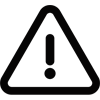BGA Australia Deputy Managing Director Michael McNeill wrote an update to clients on what the energy policies of the government of Prime Minister Scott Morrison mean for business. The update delved into Australia’s approach to energy and climate issue, some of the key areas of focus for Morrison’s government and key upcoming developments for companies to watch.
Context
Australia has beaten its Kyoto-era targets and is expected to beat its 2030 Paris targets. The government has a 2030 emissions reduction target which aims to reduce emissions 26-28 percent below 2005 levels by 2030.
The government’s overall goal is to reach net-zero emissions as soon as possible, while Australian state governments have hard net-zero targets, as do Australia’s major businesses. Australia’s climate change strategies include a Technology Investment Roadmap, National Hydrogen Strategy, emissions abatement strategies and a Clean Energy Finance Corporation (CEFC).
While the government of Prime Minister Scott Morrison sees increasing gas supply as an important tool to drive down energy prices for families, encourage manufacturing, boost fuel security and deliver lower greenhouse emissions, Morrison faces internal resistance from pro-coal members of Parliament and a gas industry weary of interference.
Significance
The position Morrison takes to U.S. President Joe Biden’s Leaders’ Summit on Climate from April 22-23 is of great interest to political observers but is likely to have little impact on companies already factoring in a low-emissions future in their investment decisions.
Australian politics will be heavily impacted by energy and climate policy ahead of the next federal election, which could be held as soon as the second half of 2021.
Implications
Eyes will be on any new commitments Australia makes in the future, including adjustments of its emissions targets. The Department of Industry, Science, Energy and Resources is leading the development of Australia’s Long-Term Emissions Reduction Strategy, which will be taken to the Glasgow U.N. climate conference in November, and Morrison has previously said he would not take a new 2030 or 2035 emissions reduction target to Glasgow.
Strong investment in renewables is forecast to continue. Over the last quarter of 2020, the share of renewables in the National Electricity Market exceeded 30 percent for the first time.
Coal will remain a key part of Australia’s energy mix for at least the next decade. Coal accounts for 40 percent of Australia’s primary energy consumption and 75 percent of Australia’s electricity generation.
BGA’s Australia team will continue to keep you updated on developments in Australia as they occur and assess the implications for companies and other stakeholders.

Managing Director
Mick is a highly-experienced government relations expert and trusted advisor on consensus building, conflict resolution and legislative developments. He has played an integral role in helping parties achieve desired outcomes in areas of national security, health policy, foreign policy and reputational crisis management, as well as media relations, communications campaigns, immigration and human rights. Mick has two decades’ experience working with government as a media analyst, political adviser and NGO advocacy manager. After a stint serving as an adviser to an Australian senator, Mick took on the role of the locally engaged senior political specialist at the U.S. Embassy in ...
Read More


























